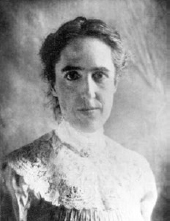1908
Cepheid Variables and Standard Candles
Henrietta Swan Leavitt (1868–1921), Edward Charles Pickering (1846–1919), Ejnar Hertzsprung (1873–1967)
Astronomers had known for some time that it should be possible to measure the distances to the nearest stars using their parallax shift from Earth’s motion around the Sun over the course of a year. But how could the distances be measured to farther-away stars that don’t show any detectable parallax, even when viewed through the world’s largest telescopes?
The answer came from the work of Henrietta Swan Leavitt, one of Harvard College Observatory director Edward Pickering’s “Harvard Computers”—female staffers who were tasked with the menial work of analyzing millions of stars on thousands of photographic plates. Leavitt’s analysis was focused on the brightness changes in periodic, or pulsating, variable stars. She examined thousands of variables, and discovered an interesting pattern among a certain class of them called Cepheid variables (after the prototype, Delta Cephei). In 1908 she published her initial finding that the brighter or more luminous the Cepheid, the longer was its period. This period-luminosity relationship meant that Cepheids with the same period that vary in brightness must simply be at varying distances from us. Cepheids could be used as distance yardsticks, or so-called standard candles, if the distance to any one of them could be independently determined.

Portrait of Henrietta Swan Leavitt.
In 1913 the Danish astronomer Ejnar Hertzsprung independently determined the distances to several Cepheid variables using sensitive parallax measurements; these provided the key to estimating the distances to any other Cepheids. Leavitt’s unfortunately largely unheralded discovery, and the subsequent analysis of Cepheids in the Andromeda galaxy and elsewhere, led to the proof that Andromeda and other similar nebulae were actually independent galaxies of their own, at vast distances of millions of light-years beyond the Milky Way.
SEE ALSO Stellar Magnitude (c. 150 BCE), Stellar Parallax (1838), Mira Variables (1596), Pickering’s “Harvard Computers” (1901), Main Sequence (1910), Hubble’s Law (1929).
May 1994 Hubble Space Telescope photos of a Cepheid variable star (insets) changing brightness in the spiral galaxy Messier 100 (M100). By treating the Cepheid as a so-called standard candle, the distance to M100 was estimated to be 56±6 million light-years.
